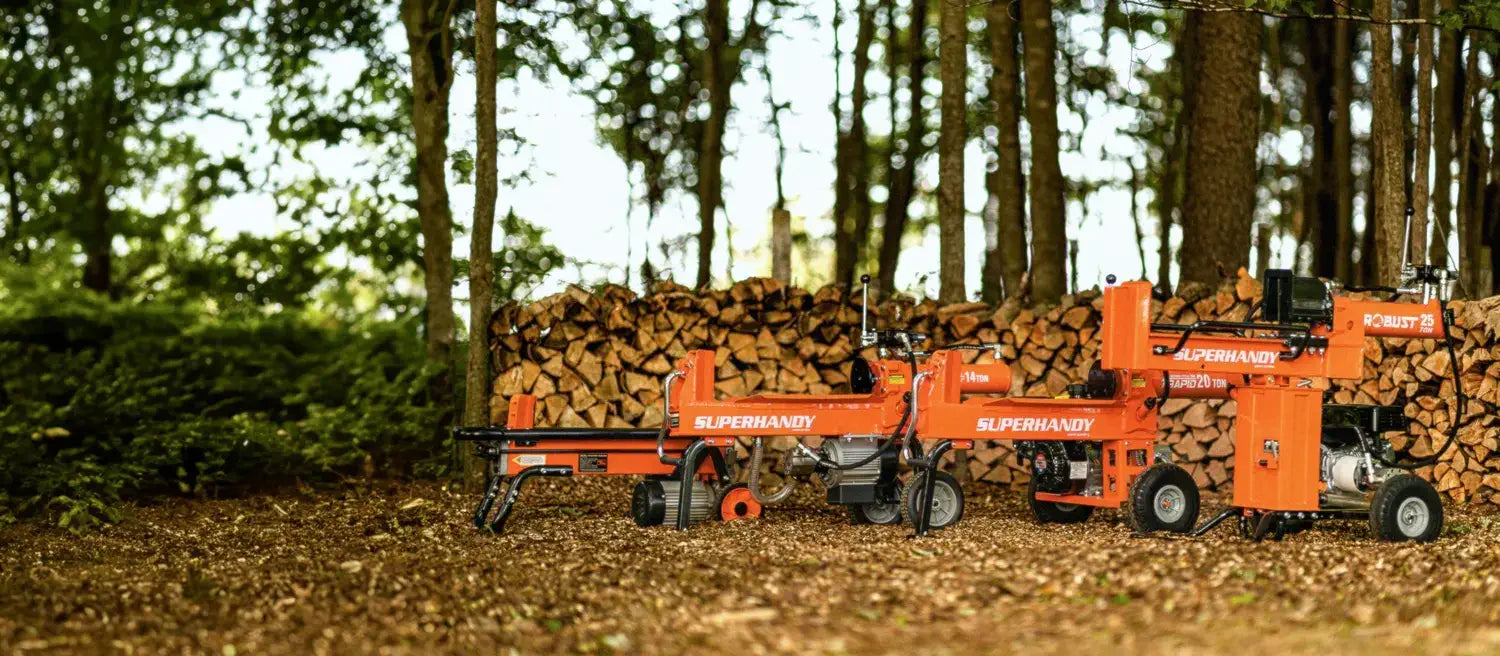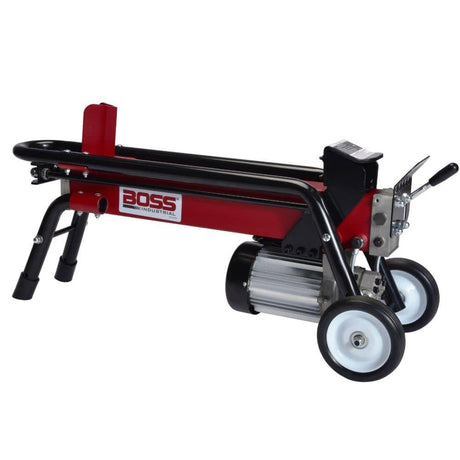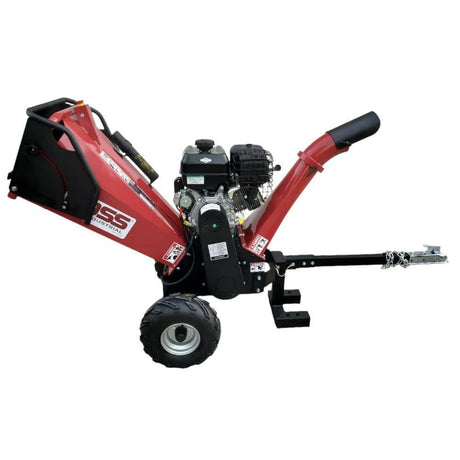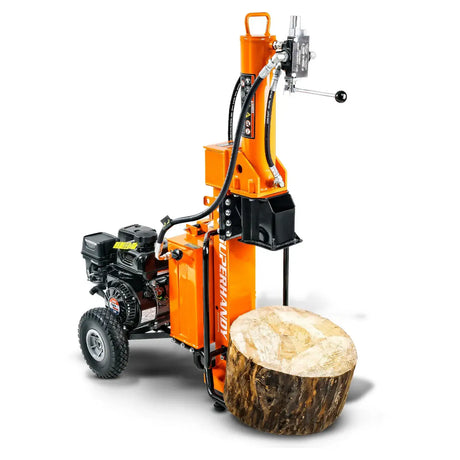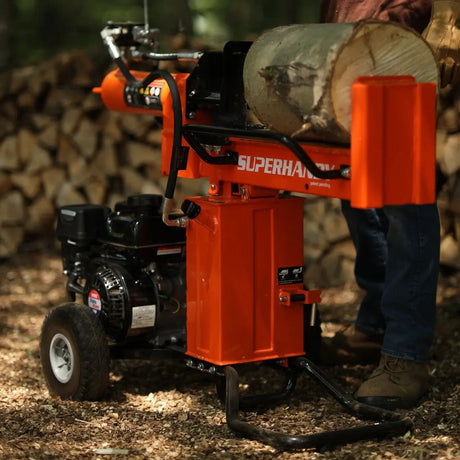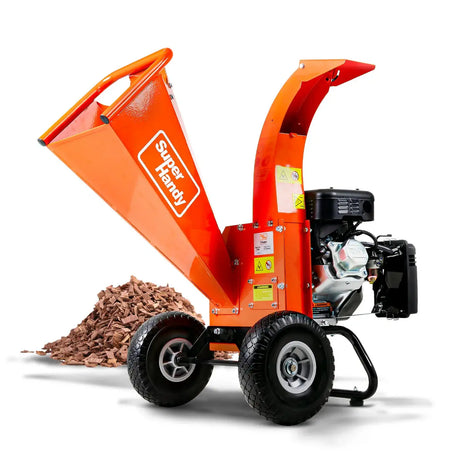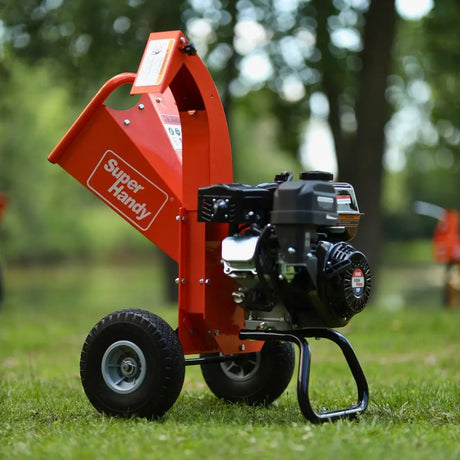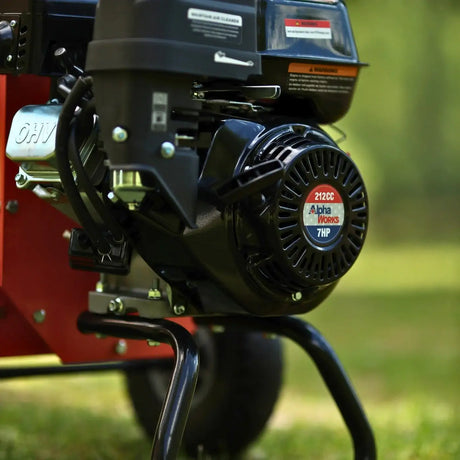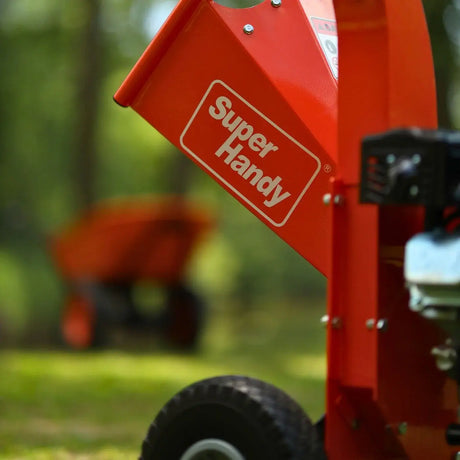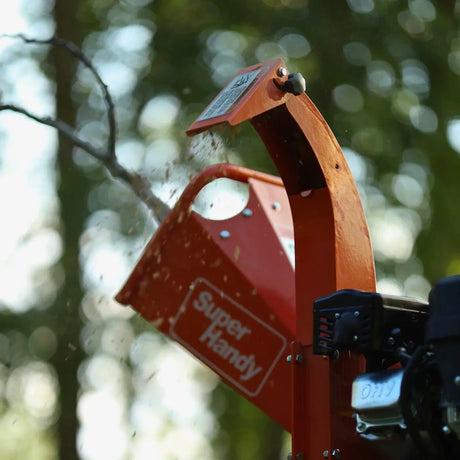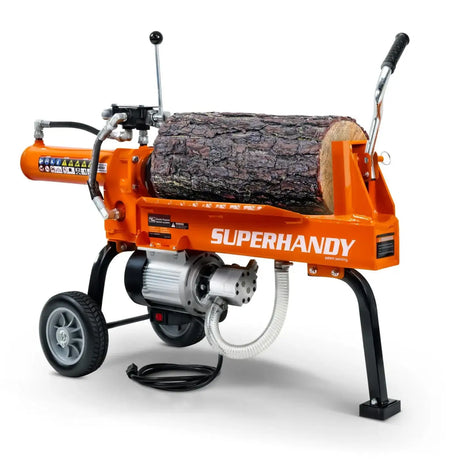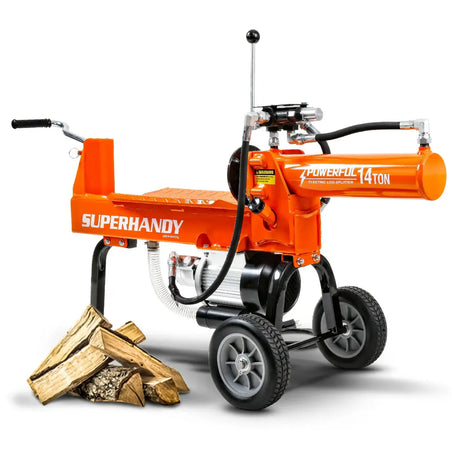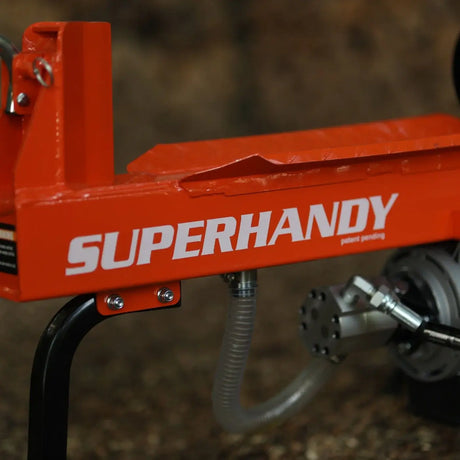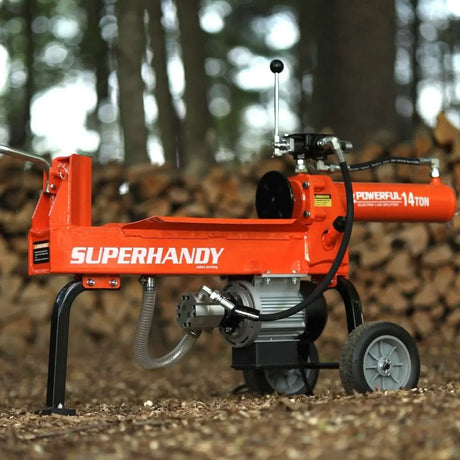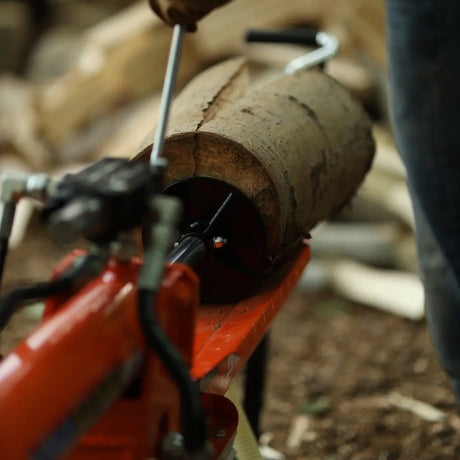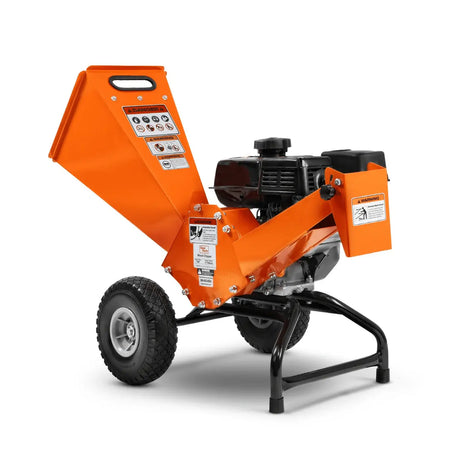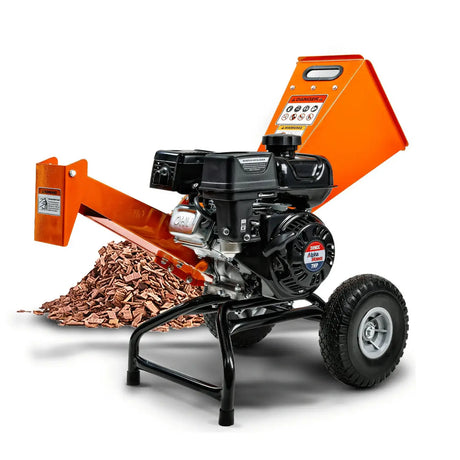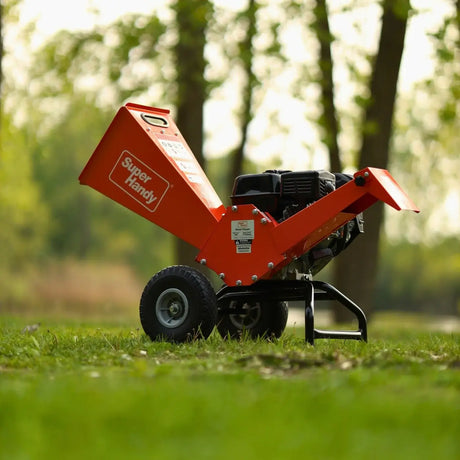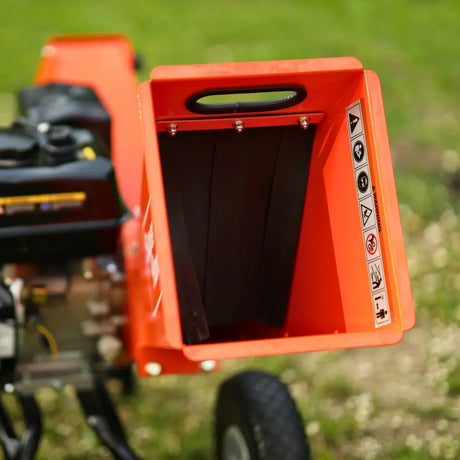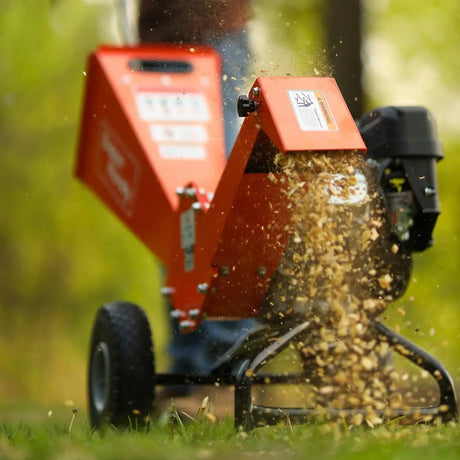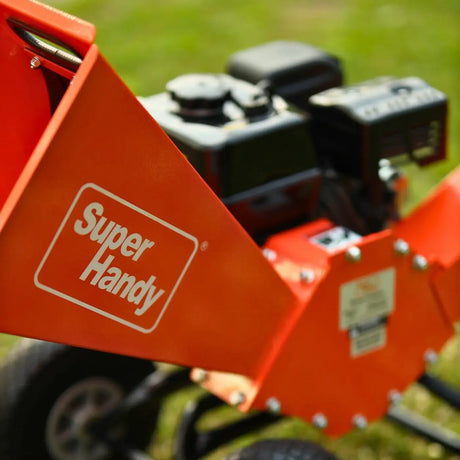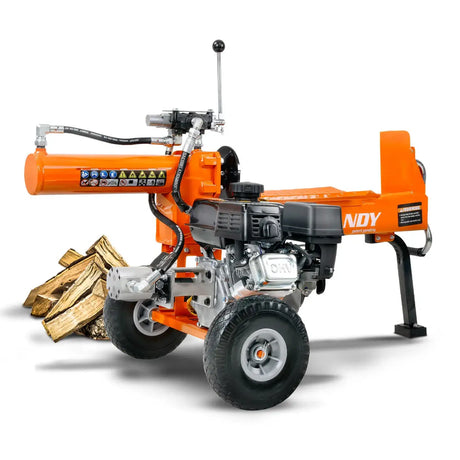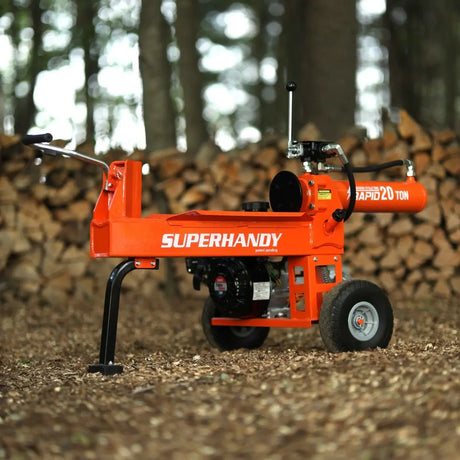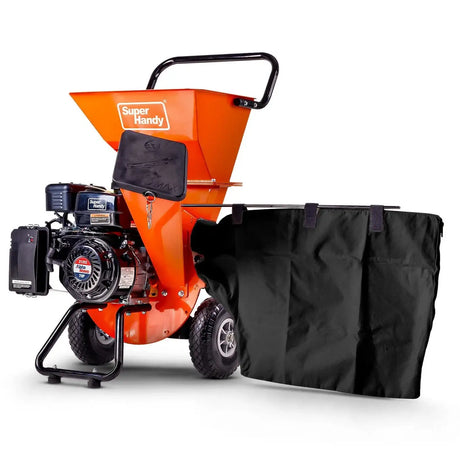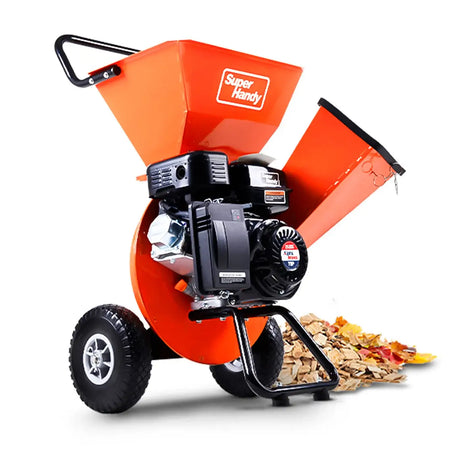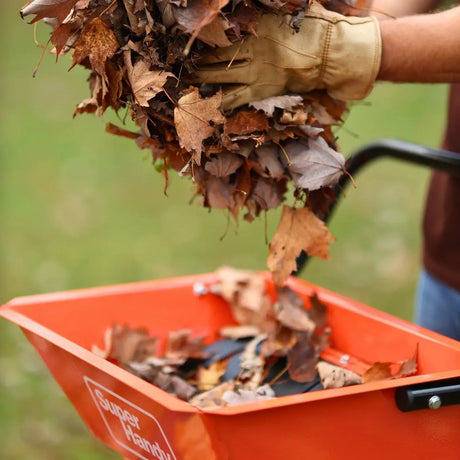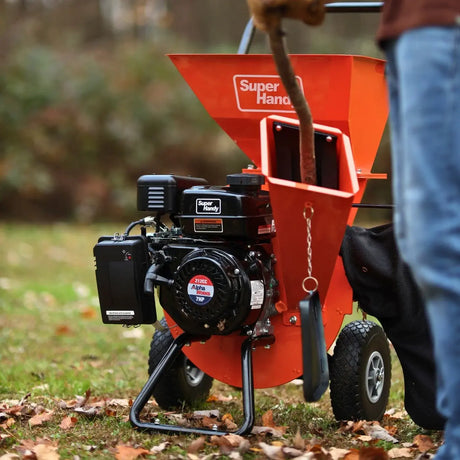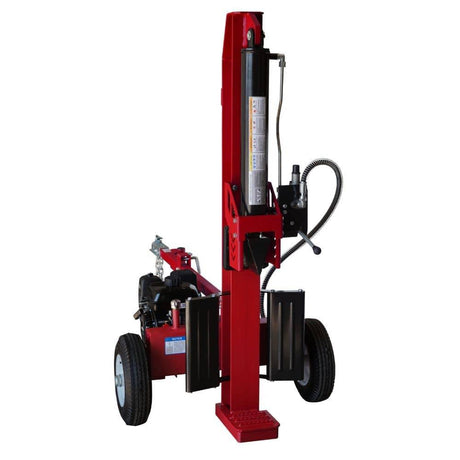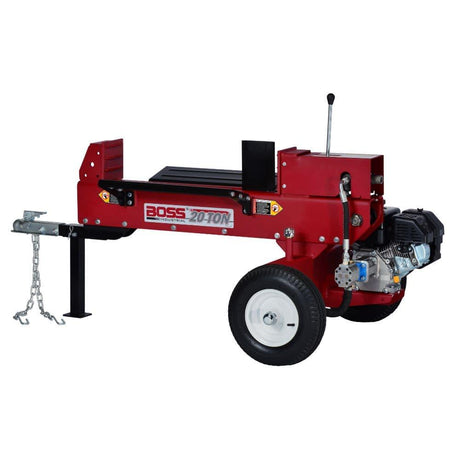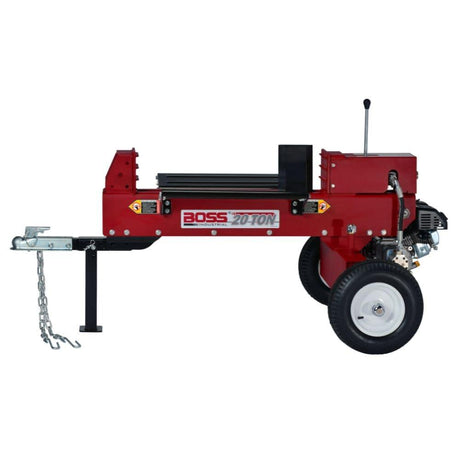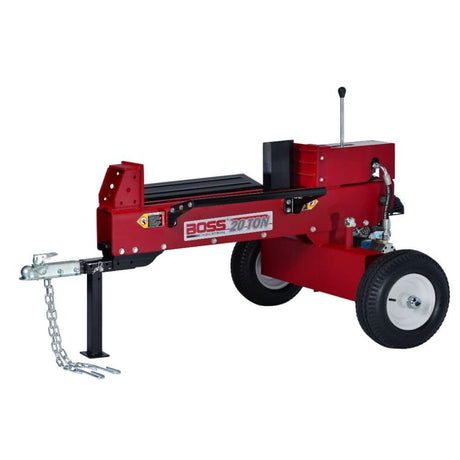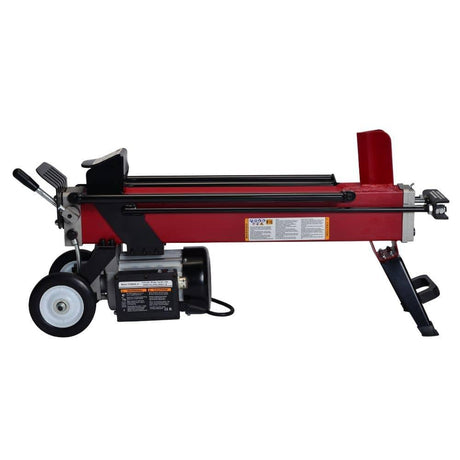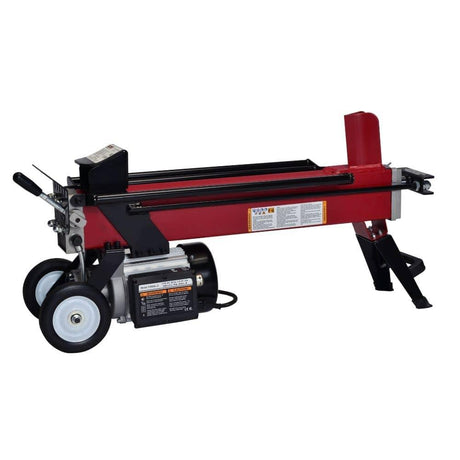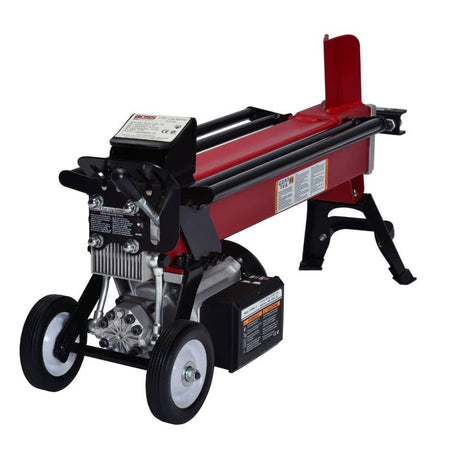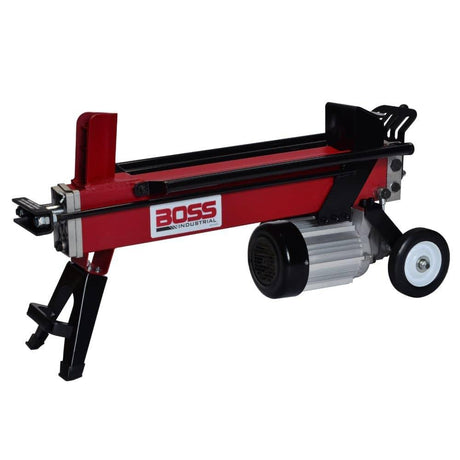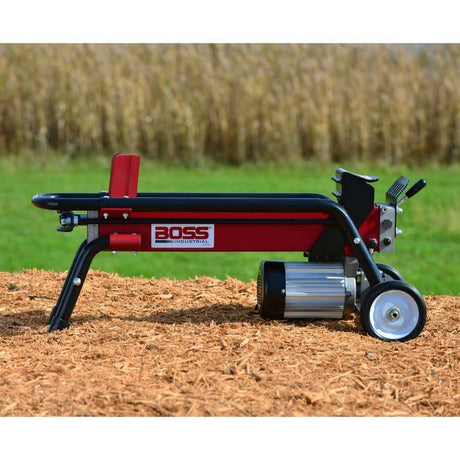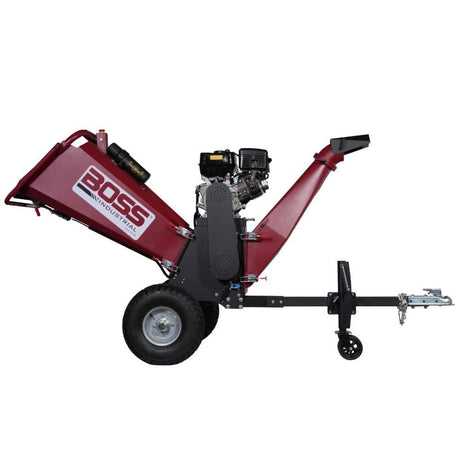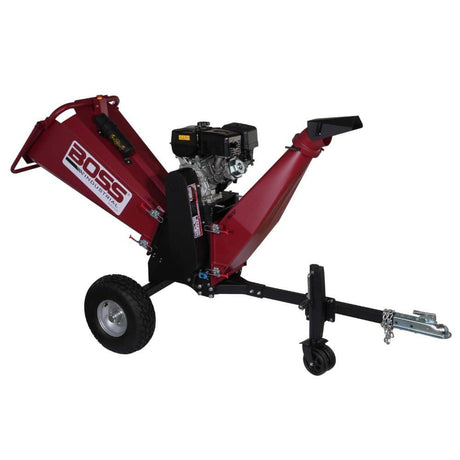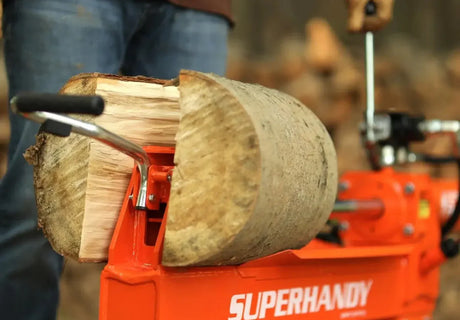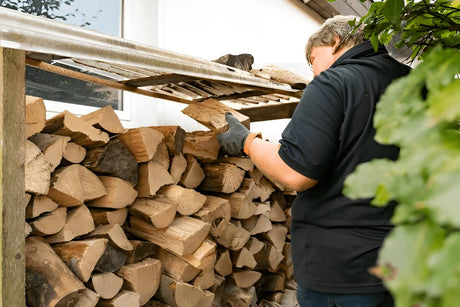Gas vs. Electric Log Splitters: Key Differences Explained
How Power Source Impacts Splitting Force and Performance
Gas log splitters are built for raw power. They're the go-to if you're regularly dealing with thick rounds of oak or hickory. Most models deliver 20-40+ tons of splitting force, and that's more than enough for big, knotty logs. If you need to split wood with a tough grain or larger diameter, the gas powered log splitter is often the best choice for serious jobs.
Electric models? They're quieter contenders. Perfect for seasoned firewood and smaller logs - think pine, birch, or ash. Many electric log splitters top out around 10 tons, though some heavy-duty electric splitter models push higher. Still, they're not built for brute power.
Here's a quick way to think about it:
- Gas-powered: ideal for hardwoods, large logs, and volume work. The gas powered log splitter is especially useful when you need to cut through thick rounds repeatedly.
- Electric-powered: ideal for light-duty, clean cuts, and occasional use. The electric motor on these units is efficient and quiet, making it great for neighborhood use.
If you're splitting logs that have been drying for a season and measure under 12 inches wide, electric works just fine. But if you're clearing storm-downed limbs or prepping cords of green wood, gas wins.
If you want the full breakdown of pros and cons, see our electric vs. gas log splitter full comparison guide for all the details.

Cycle Time and Efficiency: Which Is Faster?
This one's all about speed and volume.
Gas splitters are generally quicker. Many gas powered models have cycle times around 10-15 seconds, meaning the ram goes out, splits, and returns faster. That adds up when you're doing dozens-or hundreds-of logs. These powered splitter types thrive in high-volume scenarios.
Electric splitters tend to run 15-20 seconds per cycle, which doesn't seem like much… until you've been out there for two hours and you're only halfway through the pile.
That said, for small jobs or weekend use, the slower cycle isn't a dealbreaker. But if you're trying to process a full cord before sundown, every second counts. The electric splitter is better suited to a controlled, lighter workload.

Noise and Emissions: What to Expect from Each Type
Gas engines roar. They growl. And after a few hours, you'll feel it in your ears. Most users need hearing protection, especially with larger gas powered log splitter units.
Plus, gas models produce exhaust fumes, so you can forget about running one inside your garage or shed. In any enclosed space, using a gas motor is simply unsafe.
Electric splitters, on the other hand? Whisper-quiet by comparison. You can run one in a covered space, near your house, or even late at night without bothering the neighbors. They produce zero emissions and no fuel smell-huge pluses for suburban users. Just make sure you're near an electrical outlet or have a reliable extension cord.
In short:
- Gas = loud and smoky, better suited for wide open spaces.
- Electric = quiet and clean, ideal for residential use.
Portability and Where You Can Use Them
Where you plan to split logs matters more than most folks realize.
Gas splitters are typically heavier-some weighing 500+ lbs-and are designed to be towed behind ATVs or tractors. You can transport them deep into the woods, off-grid, or to a remote location. They're completely self-powered.
Electric splitters, meanwhile, are much lighter-usually under 150 lbs-and can be rolled by hand. But you're limited by cords and outlets. Unless you've got a generator or a nearby electrical outlet, you're tied to the house or barn. That's why many homeowners choose electric splitters for their yard, porch, or driveway.
Here's the quick breakdown:
- Use gas if you're working remotely, far from power, or dealing with rough terrain.
- Use electric if you're splitting in your driveway, garage, or backyard.

Maintenance and Longevity: What You'll Deal With Over Time
Electric Log Splitters: Low Maintenance, Fewer Issues
If you're not mechanically inclined-or just don't want to deal with engine trouble-electric is your friend.
There's no oil to change, no gas to refill, no spark plugs to replace. You plug it in and go. For most homeowners, that's a huge win. The electric motor means fewer moving parts to maintain.
Aside from checking hydraulic fluid levels every so often and cleaning off sawdust or debris, there's not much to babysit.
Here's what you'll typically do to maintain an electric splitter:
- Keep the ram greased.
- Check the hydraulic oil once or twice a season.
- Wipe down dirt and wood chips after use.
- Store it covered and dry. If you plan on storing it during winter, make sure the cords and outlets are protected.
If you treat it well, an electric splitter can last for years with barely any worry.
Gas Log Splitters: Regular Servicing and Engine Upkeep
Gas-powered splitters bring the brawn, but they also come with responsibilities. Think of them like a chainsaw or lawn mower-they need attention. These powered splitter machines require more maintenance to operate smoothly.
Maintenance-wise, here's what you'll be doing:
- Oil changes (usually every 25-50 hours of use).
- Checking/replacing the air filter.
- Spark plug inspections.
- Draining fuel before winter storage.
- Keeping the hydraulic fluid clean and topped up.
Let it slide, and you risk hard starts, reduced power, or even a seized engine.
I've seen guys pull out their gas splitter in the fall-just when they need it-and realize they forgot to drain the fuel last year. Now it won't start. That's not the kind of surprise you want with a cord of logs waiting.

Long-Term Durability and Common Wear Points
Both gas and electric splitters can last a decade or more-if properly maintained. But each has its weak spots.
For electric models, the main wear points are:
- Hydraulic seals - can degrade over time, especially if exposed to heat or cold.
- Switches and cords - occasionally fail but are easy to replace. If you're using a long extension cord or plugging into an outdoor electrical outlet, make sure your breaker can handle the load.
For gas models, watch for:
- Engine components - wear naturally over time, especially carburetors and spark plugs.
- Hydraulic hoses - prone to cracking if left exposed to sun or winter air.
- Frame fatigue - on models that see heavy use, especially when towing via trailer over rough ground.
Bottom line: gas units are built tougher but require more TLC. Electric models are simpler but not invincible. Choose the one that fits your habits and how much wrench-turning you're comfortable with.
Cost Comparison: Upfront vs. Lifetime Value
Price Range for Gas and Electric Log Splitters
Let's start with what most folks want to know right away-how much is this going to cost?
Electric log splitters are the more affordable option up front. Most decent models land in the $300 to $900 range, depending on tonnage and features. Great for budget-conscious customers or anyone purchasing smaller models to split wood near the house.
Gas log splitters, on the other hand, are an investment. Expect to spend anywhere from $1,000 to $2,500+, especially for higher-tonnage gas powered log splitter units built for bigger logs and cutting through dense wood.
So if you just need to knock out a few piles of seasoned firewood each fall, electric might fit the bill. But if you're prepping multiple cords or dealing with gnarly, knot-filled logs, gas is the ticket-and you'll pay more for the extra power.
If you want to see the top-rated options, check out our top 7 electric log splitters in 2025.
Fuel, Electricity, and Maintenance Costs Over Time
Initial price is just part of the story. Long-term costs matter too-especially if you're planning to split wood year after year.
Here's what you'll spend over time:
Electric splitters:
- Minimal energy use (pennies per hour in electricity).
- Almost zero ongoing maintenance costs.
- No oil, no fuel, no carburetors to worry about.
Gas splitters:
- Fuel costs add up, especially if you're splitting weekly or using premium gas.
- Oil changes, filters, spark plugs, and winter prep aren't free.
- You might need fuel stabilizer, a dedicated gas can, or a generator for remote location use.
Real-world example: A homeowner using an electric splitter might spend $10-$20 a year to keep it running. A gas splitter used regularly can easily cost $100+ per season, depending on fuel prices and how well it's maintained.
Resale Value and Market Demand
One thing many buyers overlook: What happens when you're done with it?
Gas splitters tend to hold value better. Why? Because there's always someone needing a tough, off-grid solution-and they're willing to pay for a used one if it runs well.
Electric splitters do resell, but the pool of buyers is smaller. And since they're usually lower in price from the start, the resale value just doesn't stretch as far.
Tips if resale matters to you:
- Keep your owner's manual, receipts, and maintenance log.
- Store it well-rust and faded paint can kill resale value fast.
- Sell during fall, when demand spikes.
Bottom line: Gas powered units cost more up front and to run, but may pay off later. Electric saves money now and over time-but don't expect to recoup much if you ever list it on Craigslist.

Which One Fits Your Needs Best? Use Cases by User Type
Best Option for Homeowners Splitting Firewood Occasionally
If you're a weekend warrior just looking to prep firewood for your fireplace or backyard fire pit, go electric.
Why it makes sense:
- You don't need a ton of splitting force for small, seasoned logs.
- Electric models are quieter, clean, and easy to store in a barn or garage.
- No gas. No oil. Just plug it in and split a few rounds after work or on a Saturday.
Think of it like this: If you're only burning a cord or two of wood a year, you'll save time and money going electric. No overkill, no headaches.

Best Option for Rural and Off-Grid Users
If you're living rural, off-grid, or splitting logs far from any electrical outlet, gas is the clear winner.
You're not tied to an extension cord. And more importantly, you've got the power to split green wood, twisted grain, and massive logs that electric models would struggle with.
Top reasons rural users go gas:
- No need for nearby outlets.
- Easier to transport into remote locations.
- Handles bigger logs without slowing down.
Just remember: it'll need fuel and regular engine upkeep. But in the woods, it earns its keep.
Best Option for Commercial or Heavy-Duty Use
When it comes to volume-think firewood businesses, landscaping crews, or anyone splitting daily or at scale-you need durability, speed, and serious power. That's gas territory.
Most commercial users go for high-tonnage gas models with vertical/horizontal capabilities. These commercial units are built to run all day, chew through wood, and keep up with demand.
What makes gas ideal for commercial work:
- Faster cycle times = more logs processed per hour.
- Handles every type of log-wet, frozen, knotty, oversized.
- Tows easily between job sites using a trailer.
- Higher resale value when it's time to upgrade.
If you're earning money with your splitter-or just have a mountain of logs to move-go gas, no question.
To compare leading brands, see our SuperHandy vs. Boss Industrial log splitters guide.


